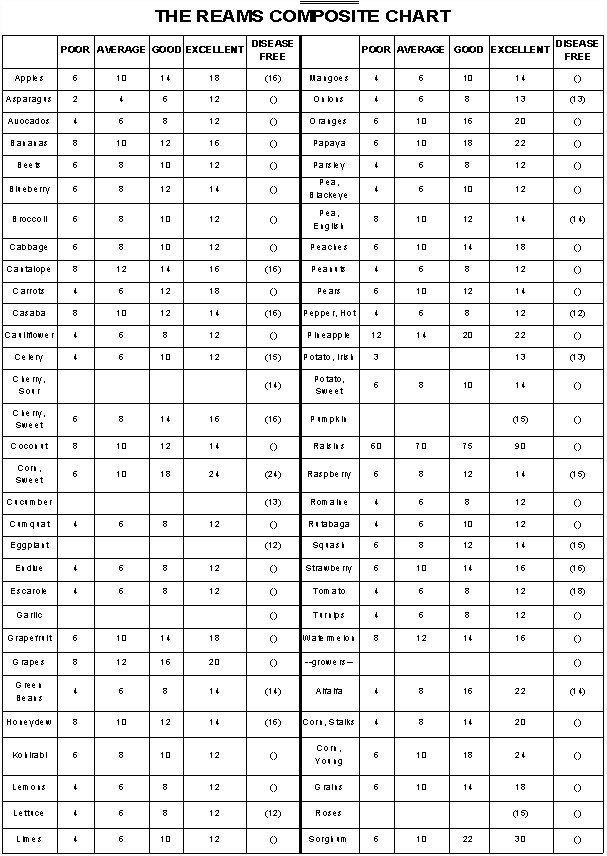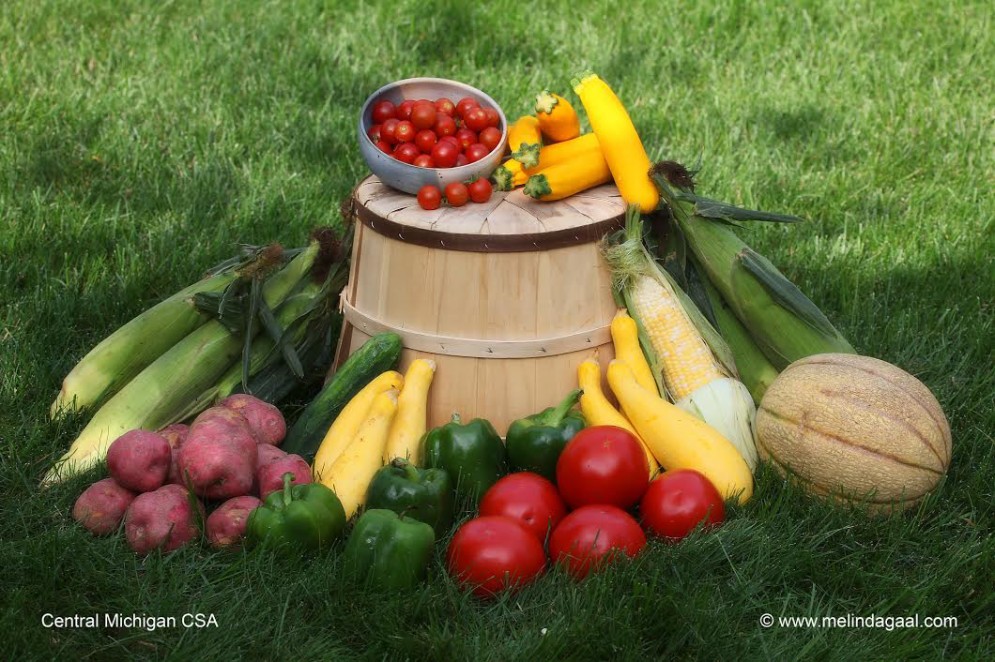In order to help make the Central Michigan CSA Program more convenient we’ve decided to add a couple more pick up locations. While the final details aren’t completely worked out yet, we’re adding Coleman Michigan and Alma Michigan to our pick up location list. These two additional locations will have a weekday evening pick up, it will be after normal work hours so it should work better with your life’s schedule. We have several members who live in these areas already and hope to pick up a few more as the CSA membership continues this spring.
Our Current CSA Locations in Mid Michigan
We currently have pick up locations for the Central Michigan CSA in:
Midland Michigan, at the Wednesday Farmers Market by The Tridge. 7:00 Am to 12:00
Gladwin Michigan, at the farmers market from 8:00 to 1:00 or so, on Saturday Mornings.
Mt. Pleasant Michigan, at the Thursday Farmers Market in Island Park, from 7:00 to 2:00
Clare Michigan at our Farm Stand on Old 27 ~ Just south of Jay’s Sporting Goods
Alma Michigan, time and location to be determined
Coleman Michigan, time and location to be determined
Membership sign up is in full swing and we are on pace to meet our farm goal this year again, to learn more about our farm and the CSA program you can visit the CSA page and look over our Farm page as well. I also recommend signing up for the CSA Newsletter on the right side of this website. If you would like to talk to me personally feel free to call, I usually have my phone with me. I’m looking forward to a great year and appreciate the opportunity to grow your family’s food.
J. Crawford
Hey There!..We Have a Great Facebook Page! Go and LIKE it Now...Interested in The CSA? Go Here--> CSA Farm Thanks for visiting!
I’ve watched Community Supported Agriculture (CSA) programs become more and more popular over the last several years. I run a successful CSA Farm here in Central Michigan and we do a year end survey that sheds light on what our members really like about the farm share program and the things they would change. Producing naturally grown chemical free fruits and vegetables is our main income, it’s what we do, so it’s important to tailor the CSA around what our members say. What we want, as a growing CSA farm, is for our existing members to renew each year and over time develop a core group of loyal CSA members. They don’t all renew and I wanted to share more about why they don’t.
I’ve found over the years that people who are moving into the area that have participated in a CSA before are very likely to renew, in fact they almost always do. I think this goes to the point that a Farm Share isn’t for everyone, but those who like it don’t want to be without it. Joining a CSA won’t change your life or transform your eating habits, but it will be a great source of nutritious produce if you’ve decided to change what you eat and you will likely get a great variety of produce you probably wouldn’t have tried otherwise.
The Pros and Cons of a CSA Farm Membership
I’ll start with the “Cons”, which are really the reasons people don’t renew or suggestions they offer in our end of the year survey. These obviously wouldn’t be negatives for everyone, but these are specific reasons and ideas that real members share about their CSA experience with us. The nice thing about communicating with our members is that we can tweak or change the program to address most suggestions, usually we add flexibility and options to make the program more convenient and member centric. Here are some of the Cons to becoming a CSA member:
- To much produce~ People don’t like the feeling they get when throwing food away.
- Missing the pick up because of other commitments means waiting a whole week for the next batch of fresh veggies.
- Getting items in the weekly share that your family doesn’t care for.
- Not being able to pick and choose which items you want and which items you don’t like you would do while shopping.
- CSA program are for a pre set time frame (ours is 18 weeks) Some people are in the area only during the summer.
- Pick up time or location may be difficult because of work commitments.
- The only items in the weekly share are ones grown in Michigan, so you’ll still go to the supermarket for bananas.
These are/were the top reasons people didn’t renew their CSA membership with the Central Michigan CSA. We’ve added or changed things to address most all of these challenges and listen each year for new ideas that would make the program better. Each CSA farm is different, hopefully these draw backs can help you ask good questions before you join a CSA where you live. I imagine most successful CSA farms you find will also have addressed these main drawbacks just like we have. In my experience the Pros, or positives, of a CSA membership far out weigh the Cons in terms of the feedback we receive each year. Here are some of the most popular things that people love about their CSA memberships:
- Excellent variety of different vegetables and fruits.
- Forces me to try new vegetables that I wouldn’t have bought otherwise.
- Great tasting vegetables.
- The weekly shares are fresh picked that day or the night before and you can tell.
- They love knowing there aren’t any chemical residues on the food they are eating.
- It’s great to teach young children how to eat healthy and be aware of where your food comes from.
- We have farm days and many of our members really like coming out to the farm that they help successful.
- The CSA is a great economical value when compared to a grocery store or farmers market.
- The pick ups are at local farmers markets.
- Many members can and freeze a lot of produce they enjoy over the winter months.
These are some of the Pros to becoming a CSA member according to our current and past members. All CSA farm shares are different and their members likely have specific things they really like about the program and others they would like to change. We have a couple farm stands and our customers often ask about the CSA. It’s simple to explain but I think it’s something that needs to be experienced to really understand.
Is Joining a CSA a Good Idea?
If you’ve never participated in a CSA program and want to know if its something you would like, then I recommend joining one. Our members are overwhelmingly satisfied with their decision to become members of our CSA. Most find that they eat way more fresh fruits and vegetables than they would have otherwise and find the weekly CSA pick up to be convenient. I love to see members with young children, I think it’s a great example to set for kids and it’s something they will remember. Each CSA program is different and value varies. We designed our CSA program for people who are feeding families and want value, some are more heavy on the “idealism” or novelty of eating nutritious food. We like to keep it real and the baskets full. Contact a CSA farm near you and talk with them about their program, you should get a good idea of how they approach the CSA membership, keep looking until you find a fit.
Every season we get a lot of comments from customers and CSA members about the taste of the vegetables we offer at the farm stand or deliver in the weekly CSA shares. A few people ask why our vegetables taste so much different than the ones from the store or others they’ve eaten before. My answer is usually a hurried, “We let them ripen on the vine”, or “They get lots of water”, or “that’s a secret”. The truth is there are a lot of factors that make some vegetables taste better than others, but essentially, it’s about the brix. Brix, or Degrees Brix, is essentially the measurement of sugar in a liquid or semi liquid substance. But there is more to it than just sugar content when it comes to great tasting vegetables, it’s about nutrition and balance.
The Benefits of High Brix Vegetables
High brix vegetables are Quality vegetables, it’s that simple. A high brix tomato will have superior flavor, it will hold a longer shelf life, and it will be packed with an abundance of nutrients that are likely missing a lower brix fruit. A tomato plant with a brix number of 10-14 (which is excellent) will stand up to disease and insect pressure on it’s own, when a plant that tests with a lower brix succumbs to the same pressure. A man by the name of Dr. Reams actually developed a chart after years of research that maps out the needed brix numbers to achieve plant immunity from disease and pest pressure. This is a valuable tool for natural growers or certified organic growers who are committed to a chemical free farming philosophy. Below is an example of the Reams Chart:

How Brix Numbers are Measured
So how do you tell if a tomato is going to taste good, how do you measure the Brix number? Brix is measured with a tool called a refractometer. A refractometer uses the light that passes through a semi liquid substance to determine the Brix number. The refractometer measures dissolved solids in plant juice, which includes sucrose and fructose, vitamins and minerals, protein and amino acids. Farmers can use the plant or the fruit to text the brix, a good farmer will want to do both. It works by simply squeezing leaf juice onto the refractometer or juice form the fruit or vegetable. The refractometer looks like a little telescope and to take a reading you just look in the optical end.
light that passes through a semi liquid substance to determine the Brix number. The refractometer measures dissolved solids in plant juice, which includes sucrose and fructose, vitamins and minerals, protein and amino acids. Farmers can use the plant or the fruit to text the brix, a good farmer will want to do both. It works by simply squeezing leaf juice onto the refractometer or juice form the fruit or vegetable. The refractometer looks like a little telescope and to take a reading you just look in the optical end.
So Why Do Some Vegetables Taste Better than Others?
You’ve got the basic idea about Brix, but why do some vegetables have higher brix? How is that accomplished? Great tasting vegetables are that way because they contain the full spectrum of mineral and nutrients that they were intended to. The long term and sustainable way to improve Brix, and thus the taste of the vegetables in your garden, is to improve the health of your organic soil. Available phosphate is critical in for moving brix upward and can be achieved by applying soft rock phosphate. Calcium is another critical element to great tasting nutritious produce. Some vegetables taste better than others because the good ones are closer to fulfilling their genetic potential, God made them to taste good. Many think that getting away from N-P-K synthetic fertilizers is the first step to produce Quality vegetables, and I agree. If you want to grow better tasting, longer shelf life, more nutritious veggies, I recommend starting with a good soil test and working with a biological farming consultant.




